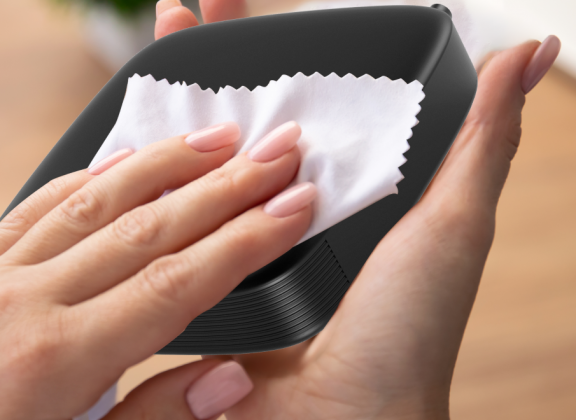An IPTV receiver is essentially a purpose-built computer condensed into a chassis barely larger than a paperback. It decodes encrypted transport streams, races packets through gigabit interfaces, and renders HDR video with millisecond precision—all while sitting in a cabinet that seldom gets a second glance. Neglect quickly erodes that precision: heat accumulates behind clogged vents, firmware falls out of sync with streaming standards, and connectors tarnish just enough to introduce intermittent glitches. What appears as a spontaneous freeze or flickering frame is often the consequence of months without basic care. A systematic approach built around physical cleanliness, disciplined firmware management, and thoughtful environmental control restores the safety margins designed at the factory and prolongs both performance and service life.
Preventive Care as an Engineering Necessity
Inside every set-top box, silicon logic hovers near its thermal envelope and electrolytic capacitors age in proportion to temperature. Each additional layer of dust insulates critical hotspots, raising junction temperatures and halving component life for every ten-degree climb.
At the software level, cryptographic libraries and decoder kernels face an equally relentless clock: threat actors weaponize published vulnerabilities within days, and content providers retire legacy CODECs just as quickly. Regular maintenance is less a consumer convenience and more an engineering requirement that keeps the device operating within its original design parameters.
Physical Cleaning: Restoring Unrestricted Airflow and Signal Integrity
Maintenance begins with the visible surfaces. After powering the unit down and allowing it to reach room temperature, sweep exterior panels and every slot with an anti-static detailing brush. Follow immediately with brief, angled puffs of compressed air so loosened fibres exit rather than settle deeper. Household vacuums generate static discharge and should remain in the closet. When the grille reveals daylight end-to-end, convective airflow is fully restored.
Ports deserve equal diligence. Removing and reseating HDMI, Ethernet, and optical plugs a few times a year gently burnishes their gold contacts, maintaining the micro-level finish required for uncompressed video and high-speed data. Always grasp molded plugs instead of cables to prevent copper fatigue. Confirm that no bundle of wires drapes over ventilation zones, and preserve at least five centimeters of clearance around the chassis. In climates where ambient temperatures routinely top thirty degrees Celsius, a silent USB-powered fan placed behind the enclosure lowers internal measurements by several degrees without adding perceptible noise.
Firmware Discipline: Safeguarding Security and Media Compatibility
Firmware is the nervous system of the receiver, moderating oscillator timings, decrypting protected streams, and authenticating with subscription servers. Vendors therefore push updates that close security gaps, refine driver stability, and incorporate next-generation compression such as AV1 or higher-bit-depth HEVC profiles. Postponing these flashes exposes the device to malware and playback errors when services drop legacy protocols.
Reserve one evening per month for a manual update check. Begin by exporting channel lists, Wi-Fi credentials, and sideloaded apps to removable storage or cloud notes. During the flash process, connect via Ethernet to eliminate packet loss that can corrupt system images. Following the automatic reboot, verify that the system clock syncs via NTP, that the storefront opens without error codes, and that a full-resolution test stream plays for several minutes without dropped frames. Those minutes confirm that newly linked kernel modules, DRM libraries, and codecs are behaving in concert.
Environmental and Long-Term Storage Protocols
Electronics rarely fail during active service; most perish after idle months in hostile conditions. If the box must be stored, allow it to cool, nest it in an anti-static bag with a desiccant pouch, and situate the package upright to protect heat-sink mounts. For everyday operation, target ambient temperatures between five and thirty-five degrees Celsius and relative humidity under eighty-five percent. Within those limits, plastic enclosures resist warping, solder joints maintain elasticity, and ferrite cores in miniature inductors avoid micro-fractures.
Power quality belongs to the same conversation. A surge-protected strip equipped with modern metal-oxide varistors clamps lightning-induced transients before they punch through the primary winding of the power adapter. In districts where brownouts are common, a small uninterruptible power supply rated around two hundred watts grants the box several minutes to shut itself down gracefully, safeguarding flash storage from corruption that often masquerades as irreversible hardware failure.
Relocation, Seasonal Downtime, and Early Warning Signals
When moving the unit, detach every cable by its plug, never the cord, to avoid stretching delicate conductors hidden beneath the jacket. Seal unused connectors with inexpensive rubber caps to block abrasive dust. Should the device hibernate for more than two weeks, unplug the power brick entirely; standby regulators still sit on the mains and see every surge that rolls down the line. After extended dormancy, inspect the board through vent holes for swollen capacitors or insect nests before re-energizing.
Vigilant owners develop an ear for anomalies. A fan spinning louder at lower loads, an interface animation that now stutters, or a sudden rash of buffering points to emerging issues. At the first sign, feel the case for localized warmth, confirm that firmware matches the latest release, and re-examine cabling for kinks or oxidation. Early intervention almost always costs pennies compared with replacing a scorched voltage-regulation module or reflowing a BGA-mounted processor.
An IPTV set-top box promises seamless access to global content, yet that promise endures only when owners match the manufacturer’s engineering with routine stewardship. Gentle but thorough cleaning restores cooling efficiency, scheduled firmware updates safeguard both security and compatibility, and mindful storage protects delicate circuitry during idle periods. These practices translate a few minutes of attention each month into years of flawless streaming, ensuring that the humble receiver behind your television continues delivering crisp visuals, instant channel changes, and peace of mind well beyond its warranty window.
